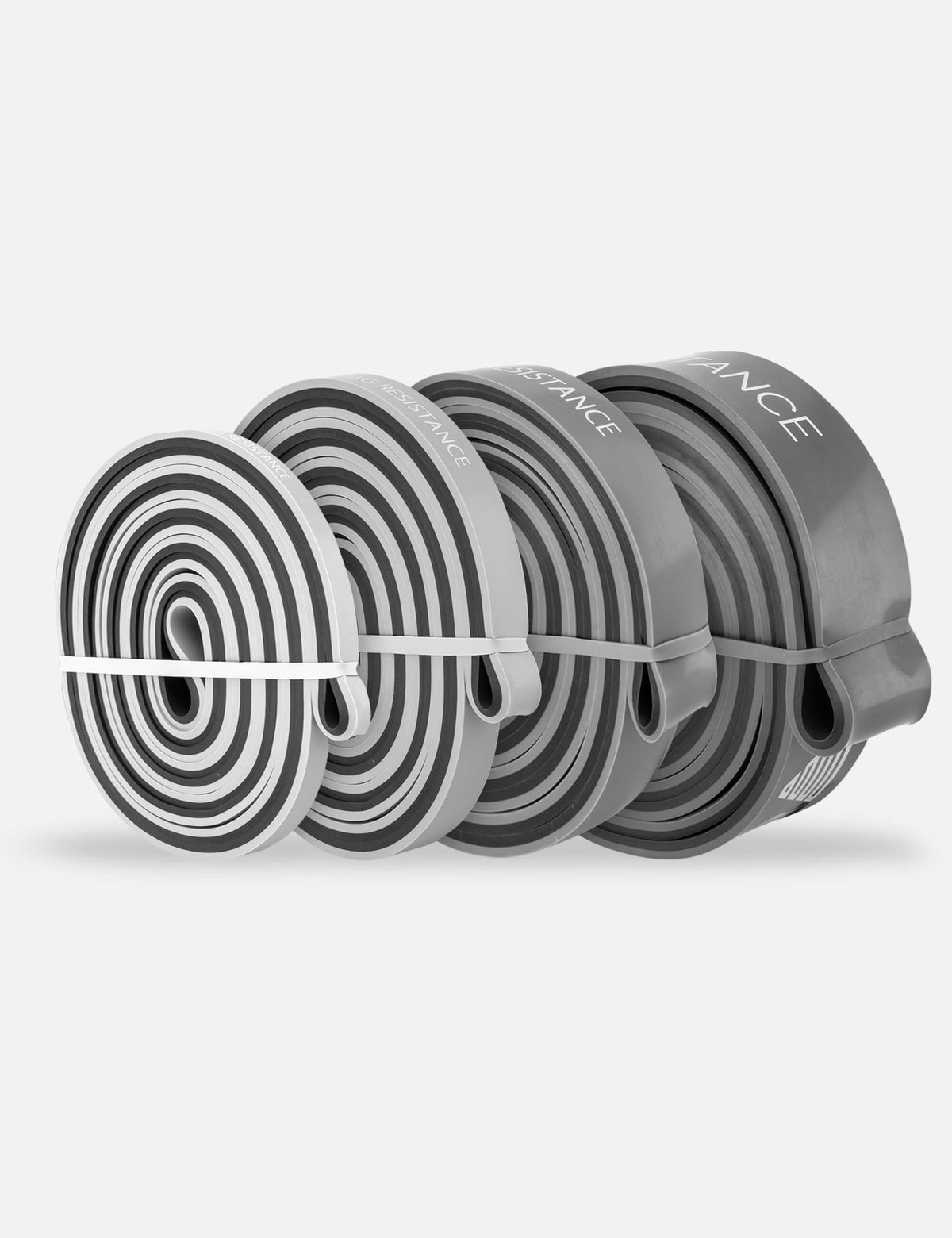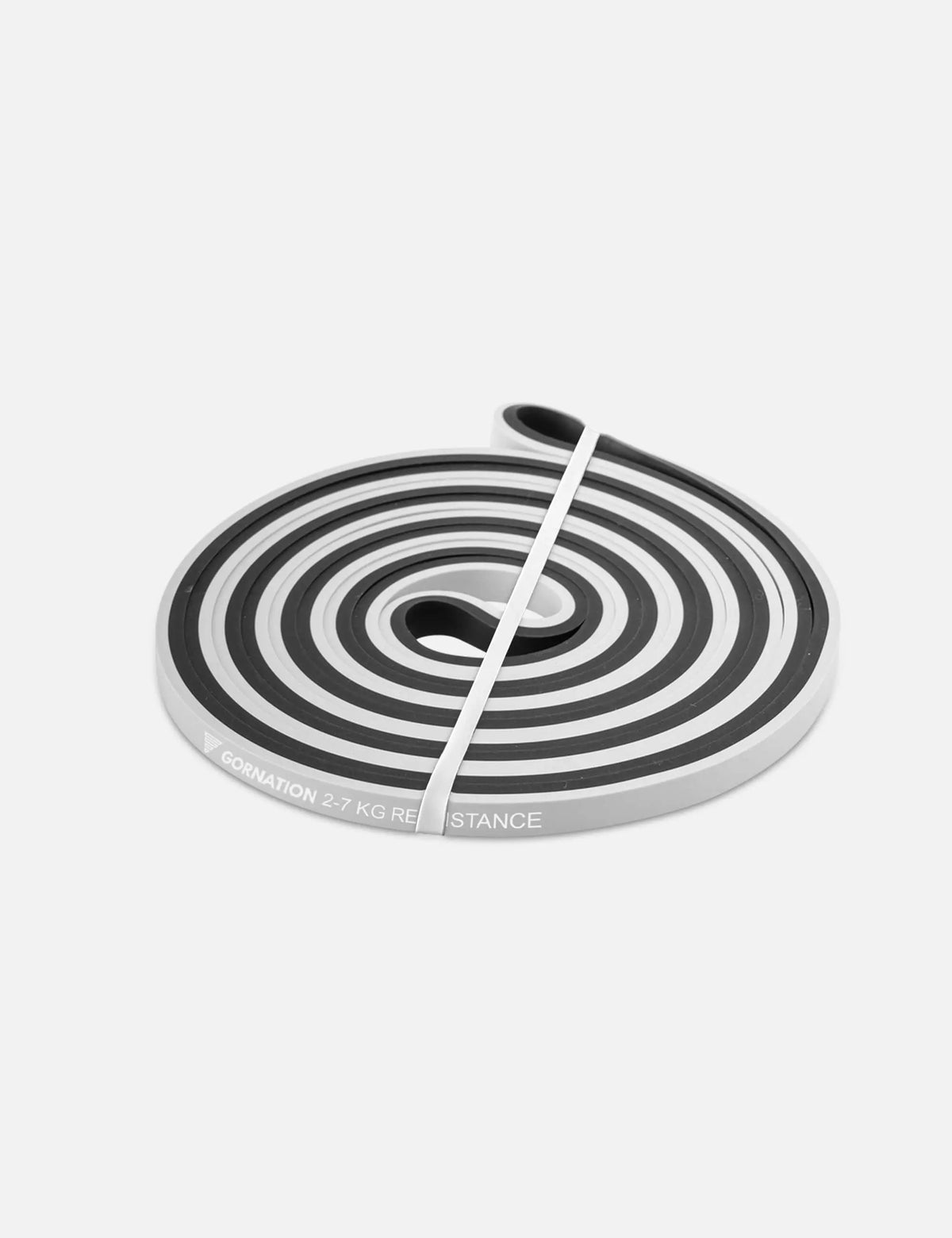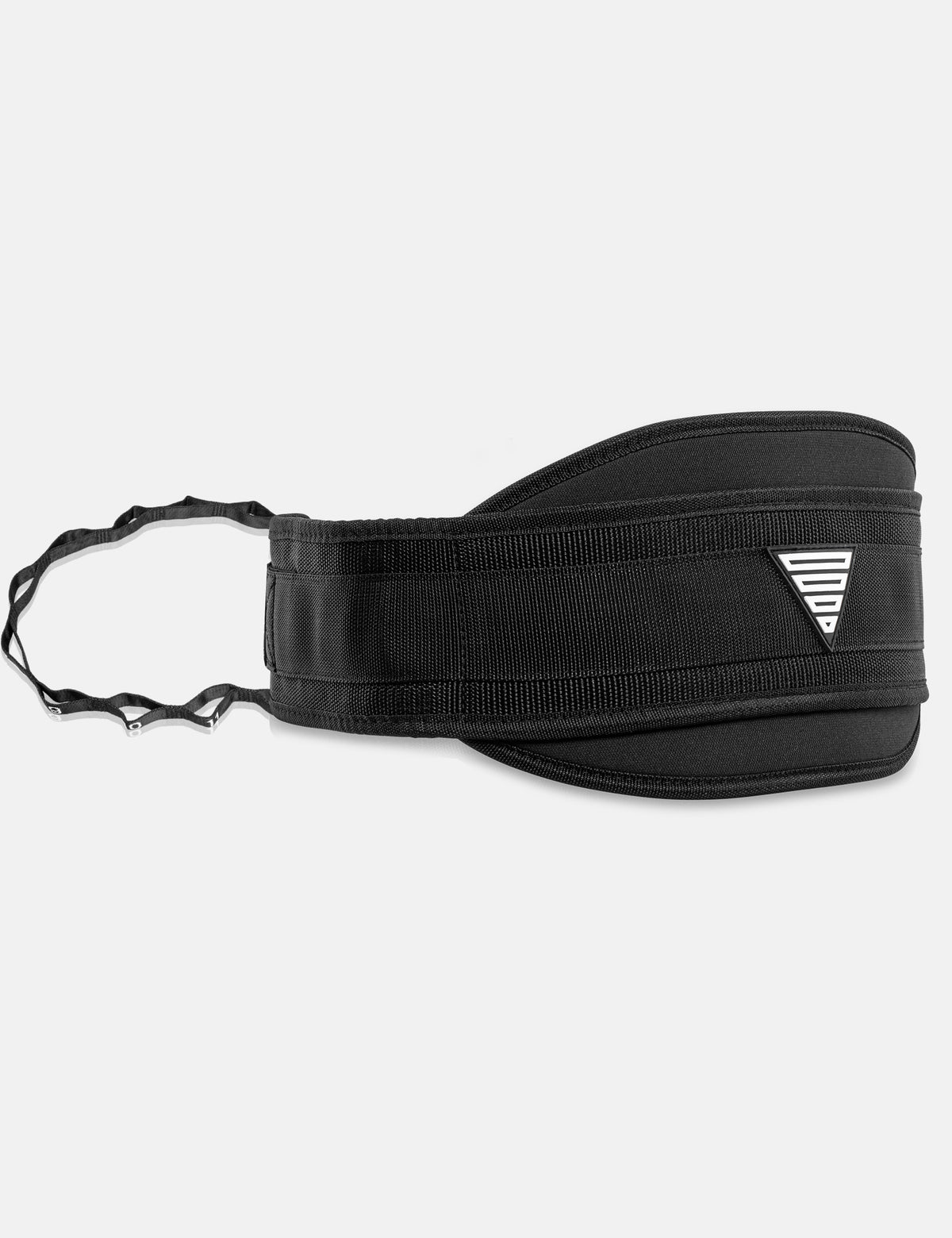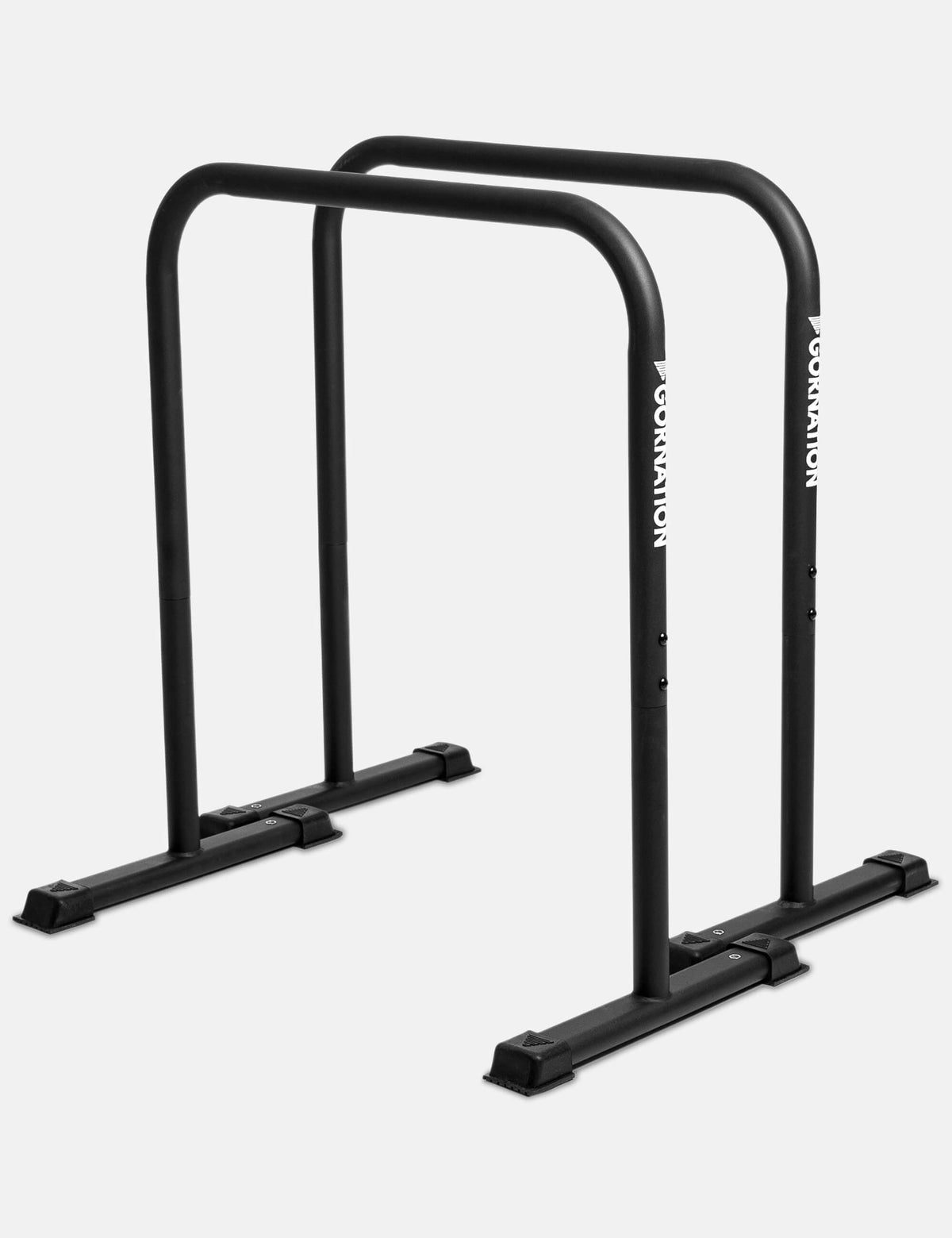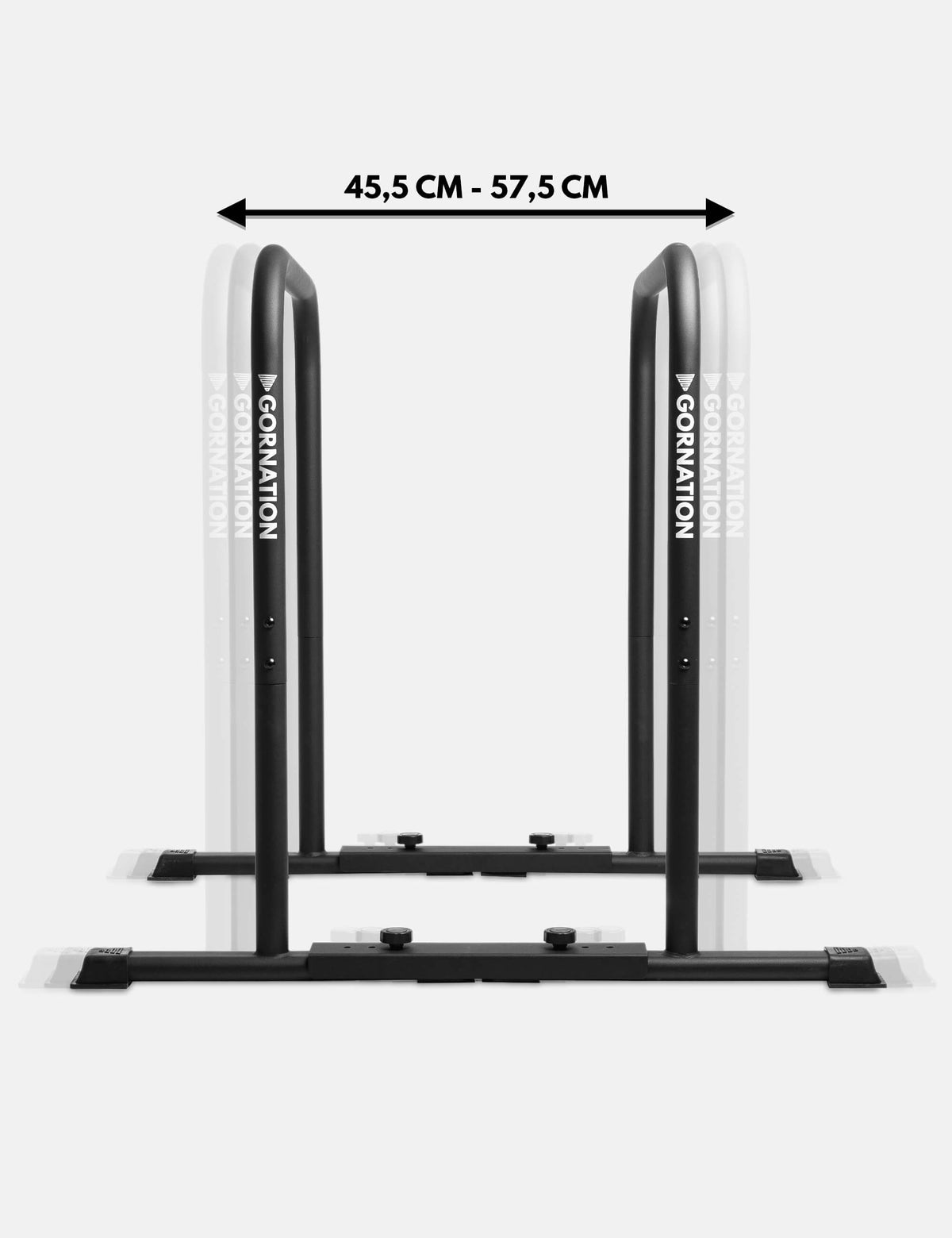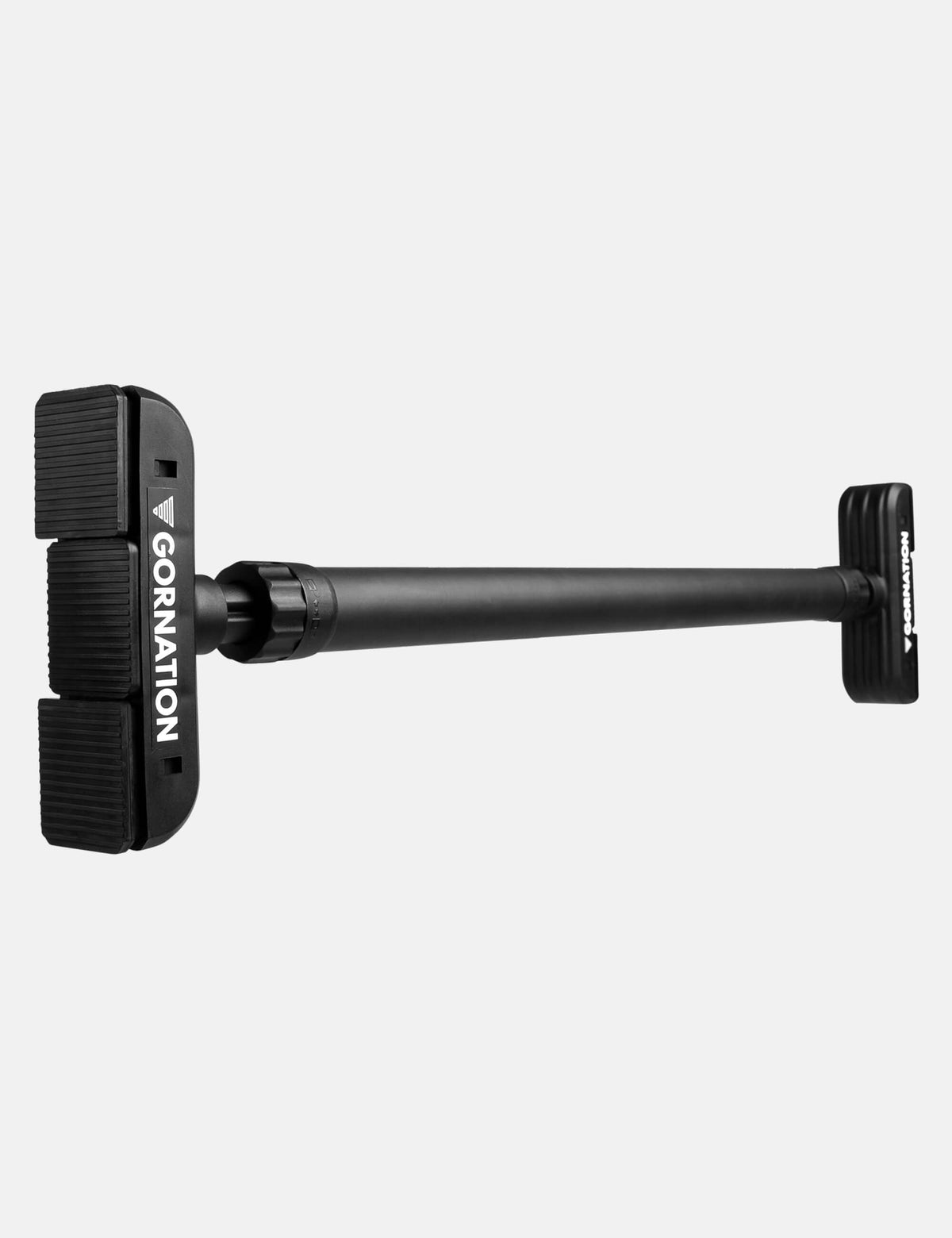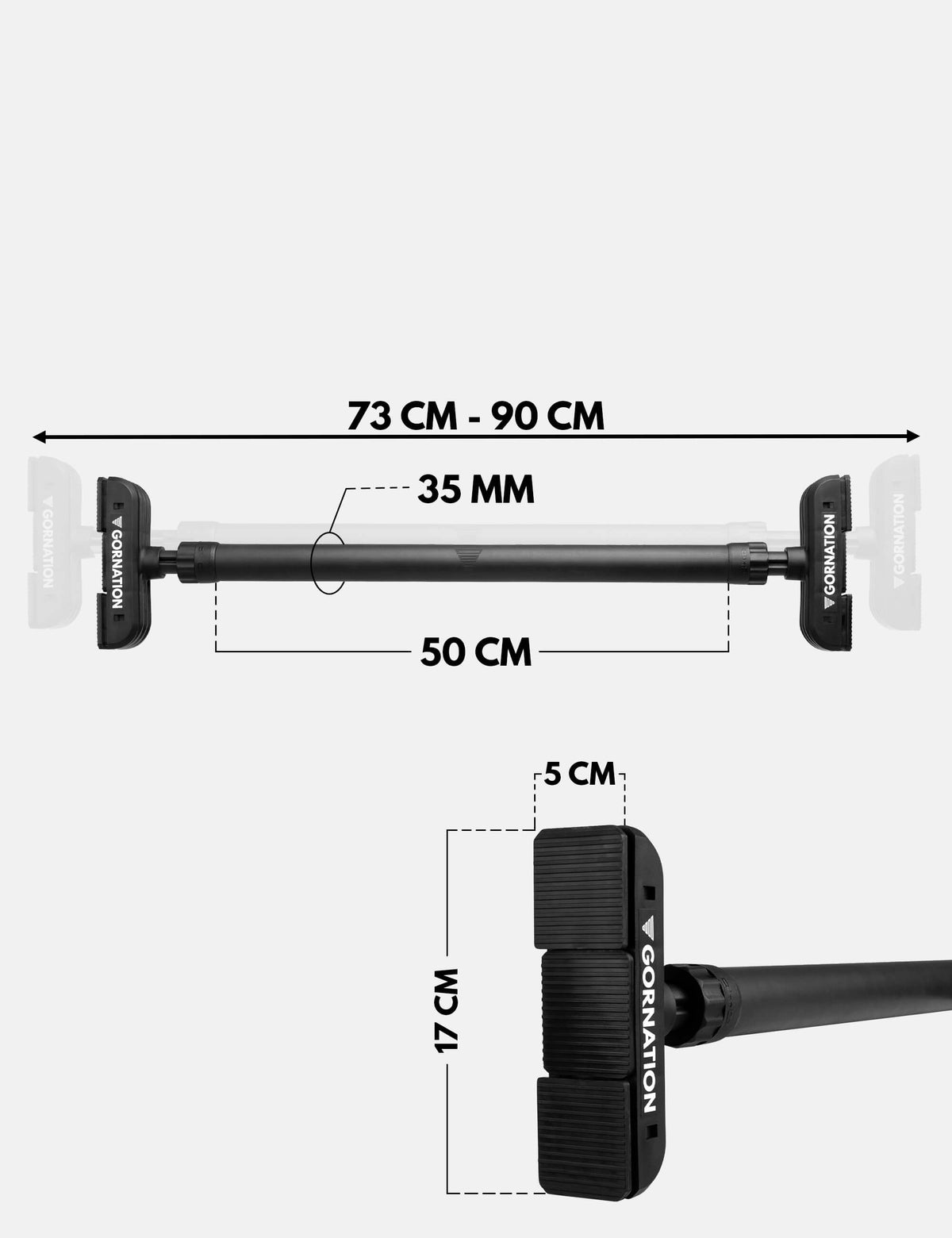How to do the exercise
The Dip is one of the most fundamental bodyweight exercises in calisthenics. It builds upper body strength, enhances muscle mass, and develops pushing power. Mastering proper dip technique is essential for safe and effective progress in your training. Here’s how to perform the Dip correctly:
1. Starting Position
Set yourself up on Dip Bars with your hands shoulder-width apart and arms fully extended. Keep your chest upright, shoulders back, and core engaged. Ideally, keep your legs straight, but if needed, bend them slightly without crossing to stabilize your body and avoid swinging.
2. Lowering Phase
Slowly bend your elbows and lower your body in a controlled manner. Lean slightly forward while keeping your elbows close to your torso. Your shoulders should descend slightly below your elbows to achieve a full range of motion, all while maintaining core tension and a stable posture.
3. Pushing Back Up
Press firmly through your palms to push yourself back up to the starting position. Keep your chest open, your gaze straight ahead, and avoid locking out your elbows aggressively.
4. Reset and Repeat
At the top of each repetition, fully extend your arms and do not stop engaging your core. Aim for clean, controlled reps rather than rushing through the movement.
Recommended Equipment for Dips
Benefits of the exercise
The Dip is one of the best bodyweight exercises for building upper body pushing strength and muscle mass:
-
Strengthens triceps, chest, and shoulders with natural bodyweight resistance
-
Improves joint stability and shoulder control through full range of motion
-
Enhances pushing power for calisthenics skills like the Muscle Up and Planche
-
Can be scaled with added weight for advanced athletes
This makes the Dip a must-have exercise for beginners and professionals who want to build strength, size, and control in their upper body training.
Main muscles used
The Dip primarily targets:
-
Triceps
-
Chest (Pectorals)
-
Front Deltoids
-
Core muscles (to stabilize the entire body)
Performing dips consistently ensures balanced upper body development and functional strength that transfers into advanced calisthenics skills.
If you're looking for other exercises, check out our Youtube video:
Mistakes to avoid
Common mistakes when performing the Dip include:
-
Incomplete range of motion: Don’t stop halfway – lower shoulders below elbows for full effect.
-
Elbows flaring out: Keep them close to the body to protect shoulders and maximize power.
-
Leaning too far forward: Maintain a controlled forward lean, but avoid collapsing forward, which strains joints.
-
Lack of core tension: Engage abs and glutes to prevent swinging or arching.
-
Rushed repetitions: Dips should be slow and controlled for maximum muscle activation.
-
Neck misalignment: Keep your gaze forward, not down, to stabilize posture and breathing.
Focus on clean execution and gradually increase difficulty by adding weight or progressing to advanced variations.
Discover more Exercises
Looking for more ways to level up your training? Check out our full exercise overview or try these effective exercises that perfectly complement your training:
Please read our legal disclaimer before starting your workout.
 | 5.000+ Reviews
| 5.000+ Reviews
 Free EU Shipping above 100€*
Free EU Shipping above 100€*
 Worldwide Tracked Shipping
Worldwide Tracked Shipping






